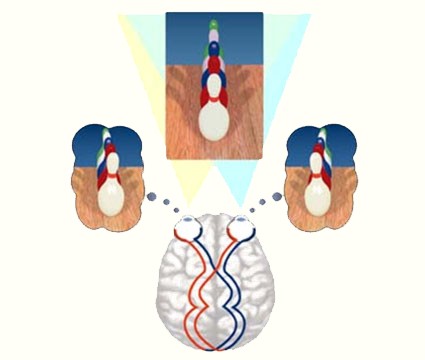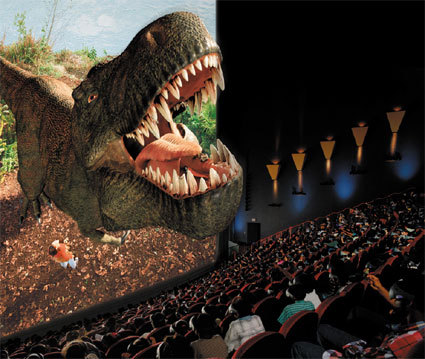3D Stereo Technology: Is it Ready for Prime Time?
Background: Spatial Perception
To understand the working principle on which stereoscopic displays are based, it is first necessary to comprehend how the human brain generates spatial perception. The discovery of how our perception of three-dimensional space is created dates back to the 19th century. As a result of the distance between the two eyes, an object that is viewed from a short distance is seen from a slightly different angle by each eye.
You can easily reproduce the effect with a little "home experiment". Look at one of the corners of your computer screen with one of your eyes, keeping the other closed, then repeat the same thing with the other eye. The corner seems to "jump" back and forth. The perspective of each eye differs slightly from that of the other. Using this difference, the brain can calculate an object's depth; it then combines the two images to form a three-dimensional spatial representation of the object.
As a result of the spacing of the eyes, each of the two eyes sees a scene from a slightly different perspective. The brain combines these images, using the differences to create one scene with spatial information.
However, not everyone has this ability. Some people do not have stereoscopic vision as a result of a misalignment of the eyes' shared focal point, refractive anomalies in the lenses or for other reasons. In these cases, the brain adapts, making up for this handicap by using a different method to create depth perception.
3D (Stereo) Technologies
A computer screen is in essence a flat projection area. Creating a true three-dimensional scene on it without the help of some technological tricks and auxiliary devices is impossible, as the screen always displays an image that is seen by both eyes simultaneously. As previously explained, however, three-dimensional vision requires each eye to see a slightly different perspective. The trick, then, is to ensure that each eye sees a different image despite looking at the same area.
The T-Rex documentary in an IMAX 3D movie theater - a montage, of course.
Although a number of different methods have been developed over the course of the years to allow a true 3D scene to be displayed on a 2D plane, none of them has really been able to become widely accepted - at least not in the consumer electronics market.
Get Tom's Hardware's best news and in-depth reviews, straight to your inbox.

